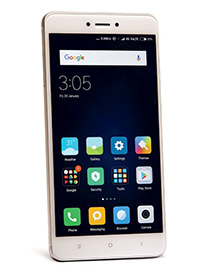 It goes without saying that Redmi Note 3 was one of the best-selling phones for Xiaomi in 2016. The phone basically opened up the sub-15k Indian smartphone market and sold about 36 lakh units in one year alone, which is a testament to how popular the device was. Now the company is following up with the Redmi Note 4, which tries to overcome some of the shortcomings of the Redmi Note 3 and bring in some additional specs. We’ve been playing with the device for a few weeks now and this is what we think.
It goes without saying that Redmi Note 3 was one of the best-selling phones for Xiaomi in 2016. The phone basically opened up the sub-15k Indian smartphone market and sold about 36 lakh units in one year alone, which is a testament to how popular the device was. Now the company is following up with the Redmi Note 4, which tries to overcome some of the shortcomings of the Redmi Note 3 and bring in some additional specs. We’ve been playing with the device for a few weeks now and this is what we think.
Design and Build Quality
Design-wise, there are subtle but important changes that sets the Redmi Note 4 apart from its predecessor. The back looks more refined due to the metal design and clean anodised aluminium separation lines. The tapered edges make the phone look slimmer despite being just 0.2mm thinner than the Redmi Note 3 and seamlessly blends with the front, thanks to the 2.5D curved glass that protects the display panel.
Another design change in the Redmi Note 4 is the placement of the loudspeaker. The speaker grilles are now moved to the bottom of the device from the back, a welcome move that enables better sound dispersion. If we talk about the physical keys and port placements, the front is still covered by the display and the touch-sensitive buttons beneath it. On the left side, we’ve got a hybrid SIM slot that allows users to use two SIMs at once or a microSD card and a SIM card (needs a dedicated microSD slot, to be honest). The power and volume keys are on the right whereas the top side hosts the 3.5mm headphone jack along with an IR blaster to use as a universal remote. The bottom has the microUSB port next to the speakers.
Key Features
The Redmi Note 3’s processing chops was handled by Qualcomm’s Snapdragon 650 processor coupled with a 2GB or 3GB RAM. However, its successor is handled by the latest Snapdragon 625 chip with 2GB, 3GB or 4GB RAM (depending on the variant you choose). Now ideally, Snapdragon 650 should be superior to Snapdragon 625, but that is not the case here. And that’s because the latter has been produced using the 14nm FinFET fabrication process. In simple words, that means the octa-core processor is more power efficient than the Redmi Note 3 without compromising performance.
The display size on the phone is a 5.5-inch one with a Full HD resolution support. The display seems largely unchanged and offers sharp, crisp image and text quality. Xiaomi also allows you to adjust the colour temperature of the display by making it cooler or warmer, depending on your preference. Additionally, there’s a night display and a Reading mode that adds a filter to cut down the blue light which reduces eye fatigue.
Another interesting change comes on the camera front. In comparison with the Redmi Note 3, the Redmi Note 4 has a lesser megapixel count at 13MP. However, it features an improved sensor that affords a 25 per cent larger pixel area and better image signal processor (ISP). There are a variety of picture modes to enhance the image. On the video side, it supports full HD resolution recording.
The Redmi Note 4 runs on MIUI 8 based on Android 6 Marshmallow, which means it’s more or less the same if you’ve used a Xiaomi phone in the last few months. The new MIUI comes with features like dual apps, second space, scrolling screenshots and lots more. While the company is testing the MIUI Nougat build, there’s no clear indication as to when it’ll release the final build for retail devices.

